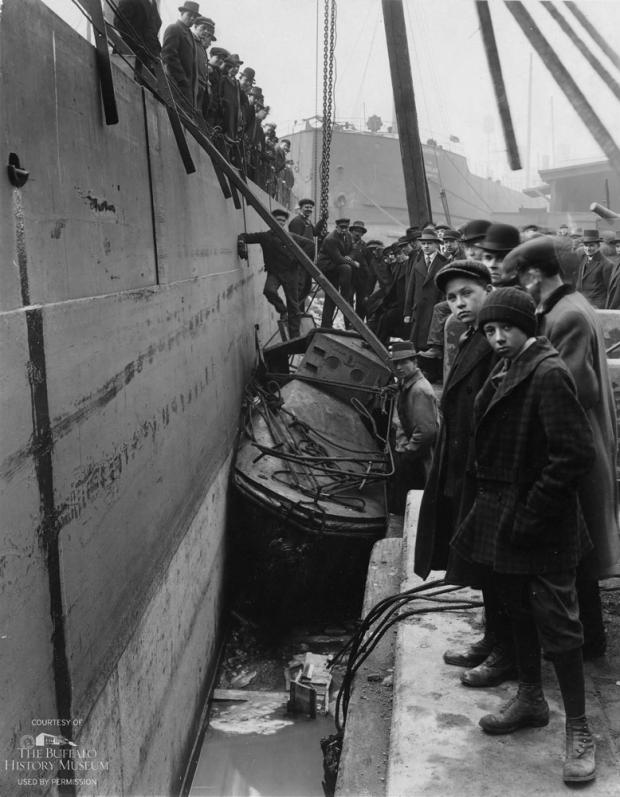Looking Backward: Buffalo River, 1918
Buffalo was the recognized center of the lake traffic of the United States. According to a 1920 Buffalo Evening News account, 10,000 vessels arrived and departed the city annually, carrying nearly 20 million tons of freight. Fourteen miles of docks were in operation along the city shoreline. The largest breakwater in the world—33,600 feet long—protected Buffalo harbor, and still does. A total of 22 grain elevators with a capacity of 28 million bushels handled 800 million bushels of grain annually. Nine ore docks handled between six and eight million tons per year. Lumber, coal, and oil transshipment added to the mix, but freight was not all. A fleet of passenger steamers connected Buffalo to industrial centers like Chicago, Detroit, Cleveland, and Toronto. Congestion was extreme, and accidents common.
In this 1918 photograph by W. H. Brandel, curious onlookers line up along the Buffalo River, gazing upon a small vessel crushed against the dock by a large steamship. Today, kayaks and pleasure boats have replaced most lake freighters, and the intercity passenger ships have vanished, but much remains along the Buffalo River to tell the story of what was America’s greatest lake port.
Image courtesy of The Buffalo History Museum. Used by permission.

